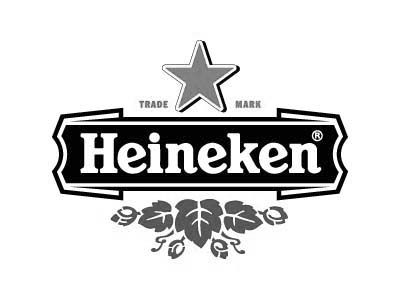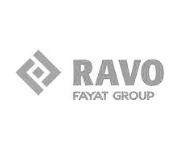How do you conduct effective feedforward conversations with your employees? Many profit, non-profit, and government organizations are busy modernizing the traditional/new conversation cycle. They are moving away from the familiar annual (or semi-annual, if you’re lucky) performance cycle / appraisal interviews / R&D conversations. The desire of managers and employees is to grow towards a continuous dialogue about functioning and development. There are exceptions, but annual appraisal conversations or are too often a mandatory exercise, and:
- Appraisals quickly focus on what someone does not do well: It’s mainly about the past. And about what needs to be improved.
- Appraisals are too formalized in forms and annual rounds.
- It’s a hassle: it takes a lot of time, is perceived as unfair by many people, and is too ‘formal’ and ‘burdensome’. According to research by Tilburg University and Gartner, an average of 210 hours per year.
“Since the Team Day, I feel that the team has really become much more of a team. That there is also more of a sense that we are colleagues working together towards a goal. I feel that if you run into something, you can usually find someone who wants to think along with you. And furthermore, I find it a safe environment to give and receive feedback. I feel that I can go to my manager if I run into something.”
Employee, Utrecht University in the run-up to her R&D conversation with her manager
Build a Continuous Dialogue
Leading research endorses that current appraisal conversations do not contribute to growth and development. A continuous dialogue about someone’s positive qualities (strengths) appears to increase the general and work-related well-being of employees[1]. Employees experience this as positive, which in turn leads to an increase in engagement and satisfaction. Moreover, conversations focused on qualities have led to direct, short and long-term increases in employees’ psychological capital, which, as previous research has shown, is linked to favorable work outcomes such as individual performance. We increasingly see organizations moving away from the current classic approach to appraisal and reward and transforming into good development conversations based on feedforward.
Good Feedforward Conversations in Practice
We see with clients that working together in a feedforward manner on improvement and development generates a lot of positive energy. You positively address each other’s qualities, and thereby people work more efficiently, and more inspired employees emerge. This is especially important in times of uncertainty for people. Keep it positive. Appreciate and utilize your people for their qualities. And when it comes to criticism, think, ask, and talk in terms of not yet and improvement suggestions.
A good feedforward conversation based on feedforward is not an annual appraisal conversation. After the first feedforward development conversation, you continuously give each other feedforward in practice. Waiting to give feedforward until the next scheduled appointment is not how feedforward is requested and given within High Performance Organizations (HPOs). Address each other in a feedforward manner, every time you/you come together to learn to contribute even better to the common ambition and goals. Very often, then!

We see more and more organizations moving away from annual appraisal conversations, which focus on criticism and the past. They are making the step towards a continuous dialogue about development and qualities. So, from old-style performance conversations with mandatory checklists, to inspiring and motivating feedforward development conversations where employees take more control over their own development. You can also look at your team from a qualities and development perspective. Which qualities are already strongly visible and thereby position us in a certain way. Reflect together on whether that is a desired positioning. And explore which qualities of whom may be brought in more visibly. Also, from a qualities perspective, it is explored how, for example, collaboration can be more effective, and/or how we can build an open feedforward culture of accountability together. Giving each other feedforward applies not only from manager to employee. Also, colleagues at the same level, without hierarchy, benefit from giving each other feedforward. You do this in the same way as described above. Since the common goal is the starting point of the feedforward, your colleague has the right to provide you with feedforward. You are dependent on each other’s contribution to the common goal. Also, concrete improvement suggestions for the coming period may be explicitly discussed. So that you both understand that this will help you achieve the common goals even better together. In practice, we see that good development conversations based on feedforward lead to conversations that matter more, employees who enjoy their work more, managers who learn to coach employees better, more engaged employees, a more learning mindset, and improved collaboration and performance. Also when the appraisal conversations are online. Enough reason to try it out!
“The feedforward development conversation was useful for me. For me, it led to taking on things more as if I was working on my own business.”
Peter van der Pol – Asset Management Manager, N.V. Nederlandse Gasunie
“There is real added value in discussing your results well with a feedforward coach. It makes me aware of the qualities I can use to improve other qualities.”
Annie Oude Hengel – Supply Chain Manager at Vergeer Holland
ACTION: ENGAGE IN THE GOOD FEEDFORWARD CONVERSATION
In the list of average qualities of managers, the quality ‘Gives feedback’ is ranked 42nd out of 48. Therefore, it does not really seem to be a quality of many managers. Therefore, try having the feedforward development conversation with a team member, whether it’s about his contribution to a project, concrete action points that have been formulated earlier, or just about daily functioning. Giving feedforward takes some getting used to, it may feel a bit like a trick at first. Depending on how you bring it (and also how sincere it is) it may come across as contrived to the receiver. However, it is a matter of practicing and persevering. Because it is above all a way to first appreciate team members for their qualities and then motivate them to improve on what can be just a little better. Who needs your feedforward to learn to become even more effective? Who are you going to give feedforward to now? What does the feedforward sound like?
Do you want more information about the possibilities to train your managers and employees in conducting feedforward conversations? Contact Marco Schreurs or Muriel Schrikkema for the (online) possibilities.
“There is a very clear difference between how you see yourself and how you come across to others. And yes, I was quite surprised when I saw the result. For example, I gave myself the highest scores regarding performance. Others saw me more clearly as a people manager and the fact that I come across very authentically. Actually, it’s a confrontation in a positive way, where you get an interesting picture that you can do something with.”
Sylvia The-McArthur – Group HR Director Loyens & Loeff (former Manager L&D at Wageningen University & Research)
[1] Meyers, M.C. & van Woerkom, M. J Happiness Stud (2017) 18: 671. https://doi.org/10.1007/s10902-016-9745-x
[2] Interview by NSvP (Dutch Foundation for Psychotechnology) about the first experiences at Gasunie with the feedforward analysis™ and the performance conversation







